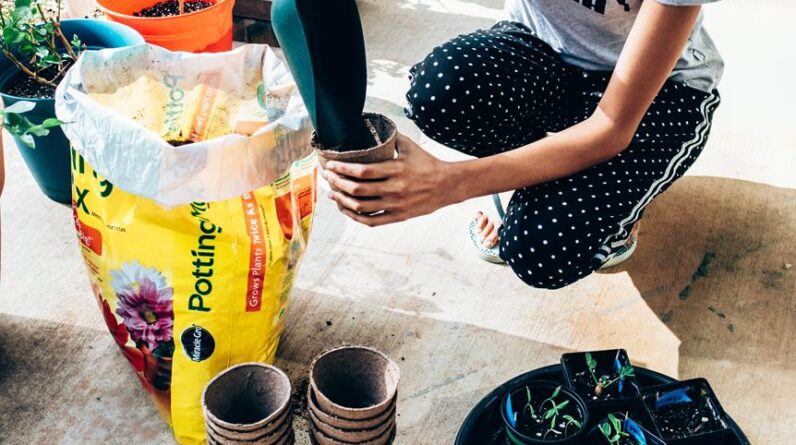
As you gaze out at your dormant garden, envision the vibrant transformation that awaits with the arrival of spring. The anticipation of new growth and colorful blooms is just the beginning of the journey towards a flourishing garden.
But how do you ensure that your garden is ready to embrace the changing season in all its glory? Let’s explore some practical steps to prepare your garden for the upcoming springtime rejuvenation.
Key Takeaways
- Conduct a soil test and check pH levels before planting for optimal growth.
- Clear garden beds of debris and plan crops efficiently for space utilization.
- Begin seeding indoors early and consider raised beds for better soil management.
- Enhance soil quality with compost and amendments, and organize tools and supplies for efficient gardening.
Essential Spring Garden Cleanup
Before diving into the exciting tasks of planting and nurturing new growth in your garden, it’s crucial to kickstart the season with an essential spring garden cleanup. Begin by removing debris, dead plants, and weeds to create a clean canvas for your garden’s transformation. Clearing out gutters and downspouts is equally important to prevent water damage and ensure proper drainage for your plants.
To prepare your garden soil for the upcoming season, consider conducting a soil test to assess its structure and nutrient levels. Adding organic matter like compost to your soil can help improve its structure and provide essential nutrients for your plants. This is also an excellent time to check and maintain raised beds, ensuring they’re in good condition for planting.
Trimming back overgrown plants and shrubs not only promotes healthy growth but also enhances the overall aesthetics of your garden. After completing the cleanup, mulching garden beds can help retain moisture, suppress weeds, and nourish your plants as they begin to flourish in the spring garden.
Planting New Flowers and Vegetables
When planting new flowers and vegetables in your garden, ensure you select varieties that thrive in your specific climate and soil conditions for optimal growth success. To maximize your gardening efforts, follow these essential steps:
- Start Seeds Early: Begin planting seeds indoors ahead of the growing season to give your plants a head start. Transplant them outdoors once the soil has warmed up sufficiently.
- Consider Raised Beds: If your garden soil needs improvement or proper drainage, raised beds are a great option. They provide better control over soil quality and can extend the growing season.
- Check Soil pH: Before planting, test your garden soil’s pH level. Adjust it as needed to ensure that your plants can absorb nutrients effectively.
- Add Compost: Incorporating compost into your garden soil enriches it with essential nutrients and improves its structure, promoting healthy plant growth.
Preparing Garden Beds for Planting
To ensure optimal growth and health for your plants, it’s crucial to properly prepare your garden beds before planting. As spring approaches, now is the perfect time to get your raised garden beds ready for the upcoming planting season. Start by clearing out any debris or weeds from the beds using your garden tools. This will help create a clean slate for your new plants.
Next, check the soil moisture levels. Raised beds tend to drain well, so ensure the soil is moist but not waterlogged. Consider adding compost from your compost pile to enrich the soil and provide essential nutrients for your plants’ roots. This step will help promote healthy growth throughout the season.
If you have a vegetable garden, organizing your raised beds efficiently can save time and make maintenance easier. Plan out what you’ll plant in each bed to maximize space and sunlight for your crops. By taking the time to prepare your raised garden beds now, you’ll set yourself up for a successful and bountiful harvest come spring.
Soil Preparation and Amendments
As you prepare your raised garden beds for planting, the key to ensuring healthy plant growth lies in properly preparing the soil and incorporating necessary amendments. Here’s how you can optimize your soil for a successful growing season:
- Test soil pH using a Luster Leaf RapiTest Soil pH Meter to determine the necessary amendments.
- Incorporate well-composted mulch into the soil to improve its nutrient content.
- Utilize a Fiskars Hori Hori Multi-Purpose Planting Tool for efficient soil preparation.
- Add compost and soil amendments based on a soil test to address specific deficiencies.
For raised beds, especially those with poor or clay-based soil, consider adding a layer of compost to enhance both texture and nutrient levels. This spring cleaning approach will create an optimal environment for your vegetable gardens, promoting healthier plant growth and better yields.
Organizing Tools and Supplies
Consider organizing your garden tools and supplies methodically to streamline your gardening tasks and maintain a clutter-free workspace. Arrange your tools by type and size to make them easily accessible. Utilize pegboards or wall hooks to hang tools, keeping them off the ground and in good condition. Label storage containers for seeds, fertilizers, and small tools for quick identification when needed. Create a specific area for potting soil, pots, and plant markers to make planting tasks more efficient. Incorporate shelving units or tool racks to maximize storage space in your garden shed or storage area, ensuring everything has its place.
For raised beds or garden beds where plants will grow, ensure the soil is prepared at the top for planting in spring. Add a little compost or organic matter to enrich the soil and provide essential nutrients for growing food. Whether you’re tending to a backyard garden or a community garden, maintaining organized tools and supplies will make your gardening experience more enjoyable and productive. Keep bare soil covered and tools at hand to nurture your plants effectively.
Conclusion
Now that your garden is prepped for spring, remember to water your plants regularly to keep them healthy and thriving.
Did you know that proper watering can increase plant growth by up to 50%?
So grab your watering can and give your garden the love and care it deserves for a beautiful and bountiful season ahead!












